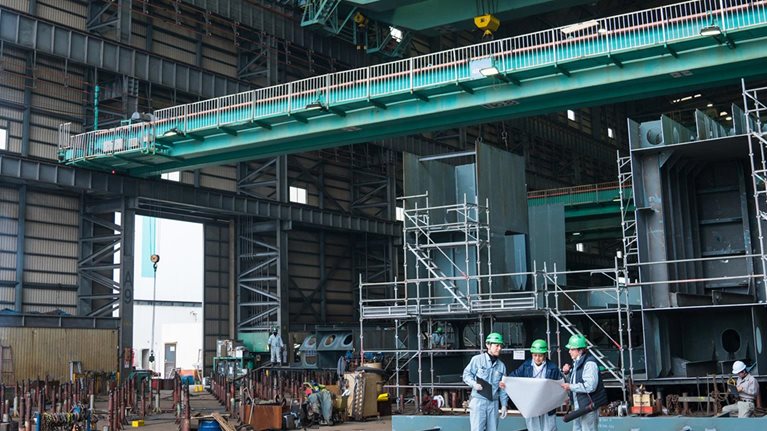Findings from economic geographer Bent Flyvbjerg, editor of The Oxford Handbook of Megaproject Management (Oxford University Press, June 2017), confirm a stark reality: Out of a database of 16,000 projects, only 8.5 percent met their cost and schedule targets, and a mere 0.5 percent achieved all promised benefits. This phenomenon, which he calls the “iron law of megaprojects,” underscores that underperformance is the norm.
We agree, as our in-depth review of more than 300 billion-dollar-plus megaprojects showed average cost overruns of approximately 80 percent and schedule delays of about 50 percent. For executives overseeing such significant investments, these statistics highlight the critical need for robust project management and risk mitigation strategies.
The problem is only growing. Worldwide, an estimated $24 trillion in capital is ready for deployment over the next five years across heavy-industrial projects, with China accounting for approximately 39 percent, the European Union for 15 percent, the United States for 12 percent, and India for 8 percent (exhibit). Two segments, energy and manufacturing, account for much of the rising demand as companies scramble to build everything from liquefied-natural-gas facilities and pharmaceutical plants to data centers and chip fabs.

Risks are rising as uncertainty grows about geopolitics, tariffs, trade, interest rates, and macroeconomic conditions. This has led to a world littered with multibillion-dollar projects whose economic assumptions collapsed, sometimes midconstruction—especially in complex, resource-intensive industries such as energy, chemicals, and technology.
Companies have tried to adjust, but without consistent success. Peer-review panels are usually composed of internal subject matter experts charged with assessing a project’s technical and business assumptions. But that composition can be ineffective, as those panels often focus too much on technical risks rather than investment thesis—and lack the authority to advance projects. At the other extreme, “cancel authority” structures, based on the investment committees typical in private equity, are less effective in large organizations with many competing constituencies.
A few organizations are generating better results with a happy medium: the “independent project challenge team.” By focusing on a few core elements, these teams can work with a broader spectrum of experts than peer review panels do and operate with a less demanding structure than a cancel authority does. One global energy company has used this approach to revamp its entire $50 billion capital-projects portfolio, while a utility adapted it to successfully deliver a major generation facility despite cost increases of more than 40 percent over baseline assumptions.
The elements of an independent project challenge team
In this article, we’ll look at how—and why—an independent project challenge team structure offers a pragmatic alternative to peer reviews and cancel authorities. But first, let’s examine the downsides of existing review structures.
In a peer review structure, company subject matter experts from outside the core project team assess the project’s scope and key assumptions. The goal is to confirm early-stage project readiness, technical design validity, and business-case credibility. Yet, most peer-review panels lack deep commercial, financial, and market expertise, resulting in a heavy focus on technical maturity and risk exposure rather than whether the project is competitive. Drawing only on internal perspectives, peer reviews are more vulnerable to biased thinking, particularly if the panel’s analyses depend on data sources that the project team has used. And the panels generally lack decision authority, providing advisory recommendations that project-team leaders find easy to ignore, particularly once a project has momentum.
Cancel authority structures also rely on internal expertise, but differ from peer reviews in a few important respects. For example, as in private equity investment committees, cancel authorities draw more representation from a company’s financial and commercial functions—which are independent of the project team and better able to evaluate its economics. The most important change, however, is in the power they wield: As suggested by their name, cancel authorities can decide a project’s fate. But that capability has made the structure difficult to translate to large, capital-intensive organizations, which tend to have far more internal constituencies to satisfy than private equity companies.
Independent project challenge teams turn the review into a more realistic pressure test of a project’s business case, including its scope, costs, schedule, commercial terms, and assumptions as to overall returns. They do so in five ways:
- Ensure objectivity. Challenge teams should be truly independent, with no stake in a project’s success or failure. Instead, their sole mission is to uncover the raw, unfiltered facts about a project’s viability. Effective challenge teams from leading organizations are sponsored by the executive team with a mandate to provide independent oversight separate from the project team.
- Bring in external perspectives. To further counter bias, the company should set a clear expectation that the team incorporate learnings from industry associations, research centers, or other third-party institutions. Leading organizations use these insights to challenge existing beliefs and introduce diverse perspectives. For example, one energy organization runs a red-team, blue-team exercise to interrogate plans before making final investment decisions.
- Take an investor mindset. Each element of the review should paint a clear picture of the project’s investment profile, resiliency, and competitiveness. Teams will need cross-functional capabilities to scrutinize critical vulnerabilities and assess the investment thesis, with a focus on economic returns. Taking a page from private investors’ disciplined approach to deal selection, challenge teams should maintain a ruthless focus on value creation and develop standard criteria for all evaluations to enable discussions on the merits of the investment.
- Focus on competitiveness. Effective challenge teams force discussions on how the project will compete in its market and what must be true (covering factors from geopolitical risks to detailed performance benchmarks the asset must meet) in order for the undertaking to succeed. These assumptions require continual updating, particularly given chronic volatility in capital markets, macroeconomic conditions, and geopolitical events. Industry cost curves, based on detailed competitive intelligence and dynamically adapted to local contexts, can provide an important counterweight to excessive optimism.
- Exercise real decision influence. Rather than issue easily dismissed recommendations or a thumbs-up, thumbs-down decision on the project’s future, the team instead should submit its evaluation directly to company leadership—which then determines whether the project still aligns with strategic priorities. In practice, one mining company authorizes its challenge teams to pause or even reshape projects as part of a standard stage-gate review.
These elements are essential for enhancing project outcomes and aligning with strategic goals. Below, we look at the success of an independent project team at a global energy company with more than $20 billion in major capital projects.
An energy company’s dilemma
Company leaders were faced with a startling finding from an internal analysis: Their world-spanning capital-projects portfolio had yielded only minimal net present value, with more than half of its potential lost to underperformance. The reasons for subpar returns varied from rosy assumptions about input costs, productivity levels, and work-hour requirements to unrealistic views on market dynamics. But all shared a root cause—bias—resulting in significant cost and schedule overruns.
The findings led company leaders to rethink their capital operating model, particularly the process for approving major project investments. The organization’s business unit–led approach, which gave the central team limited functional authority and left core responsibilities to others, created significant hurdles. Functional and business leaders were reluctant to cede control and resisted the idea of independent reviews, especially those conducted by external parties.
Historically, project leaders would instead conduct informal peer reviews, which relied on in-house experts from other businesses. While these reviews sometimes resulted in major changes, more often they yielded little more than superficial sanity checks on the project’s assumptions. Peers often used the same data and project experience as the project’s sponsors, and unsurprisingly, tended to reinforce groupthink.
Leaders conducted a bottom-up review that involved extensive interviews, a thorough analysis of past projects, and a deep dive into the lessons learned. The breakthrough revelation: An outside view was needed to provide a contrarian perspective that would better inform critical decisions and minimize risk. Business leaders came to understand that only a rigorous new assessment structure, one with an explicit mandate and informed by external perspectives, could provide the necessary objectivity to protect the company’s health.
For several years, the organization has integrated independent challenge-team reviews into the development process, bringing in external parties to test existing beliefs and classify projects into three categories. Sound projects are ones that can become more resilient and valuable with relatively minor changes—such as the $1.5 billion offshore energy project where $250 million in engineering cuts (effectively a reduction in project scope) would keep the project viable even under relatively extreme low pricing scenarios. Projects with clear signposts, on the other hand, can be considered “sound” only once the overall market environment, including price, regulatory, geopolitical, and other risks, shifts significantly. Lastly, projects requiring rethinking face cancellation for any number of reasons that cannot be viably mitigated.
The challenge team in action: New technologies
The independent challenge team was called in to evaluate a new technology project with the potential to generate $5 billion in future value—if the company could manage a regulatory context involving multiple jurisdictions, complex tax and financial implications, no precedents for modeling prices, and little market intelligence and customer insights to understand how to best structure commercial relationships. Not surprisingly, the company defaulted to highly conservative assumptions. Not surprisingly, the project stagnated.
The challenge team quickly realized that the original assumptions were needlessly pessimistic, based on general unfamiliarity rather than in-depth analysis. On closer examination, the challenge team found that the project’s major components were largely well studied and low risk, with benchmarks available to create a more realistic range of outcomes. This exercise revealed significant opportunities to work with engineering, procurement, and construction contractors on a faster and lower-cost project plan that would still provide adequate risk guardrails.
Moreover, the project’s market potential turned out to be substantially higher than initial projections, which were based mainly on anecdotal evidence. The challenge team built a simple supply-and-demand outlook to create price forecasts and establish a fact base for the commercial team to engage with customers.
The final surprise concerned the project’s positioning against competitors. Project leaders had initially believed the company should proceed cautiously. The challenge team uncovered that, with realistic assumptions, the project was actually highly competitive if executed correctly. In fact, the project would need to move quickly to capture the first wave of customer demand and lock in increasingly scarce skilled labor in the region.
One utility’s coal conundrum
A large, regional utility decided to replace its aging coal-burning capacity to meet both rising demand and clean-energy standards. Its next step was to develop an effective replacement. One solution that company leaders wanted to explore would combine new power generation capacity with carbon capture, utilization, and storage (CCUS) technology. But the nascent state of CCUS left leaders grasping at straws to estimate cost and schedule risks.
Enter the challenge development team.
The team’s first step was to develop a detailed cost benchmark for each component. The benchmarking revealed that the power generation component alone was already 40 percent more costly than similar recently completed projects. Next, a comprehensive risk assessment of CCUS gave leaders an in-depth understanding of the technology’s effectiveness and cost impact. From the two sets of data, the challenge team concluded that there was no commercially feasible scenario in which the project in its current form could meet its performance, timing, and financial objectives.
But the team also found a more viable alternative. If the CCUS component were delayed, the company could focus instead on reducing the cost of the power generation component, which on its own would reduce carbon emissions substantially. This phased approach would allow CCUS technology to mature while the company continued to deliver expected generation capacity and sustainability improvement on time.
Large projects are risky, but a systematic, unbiased approach can create a lasting competitive advantage. In a market with growing demand, an independent lens helps identify and mitigate risks early, optimize costs, and keep capital projects on track.


